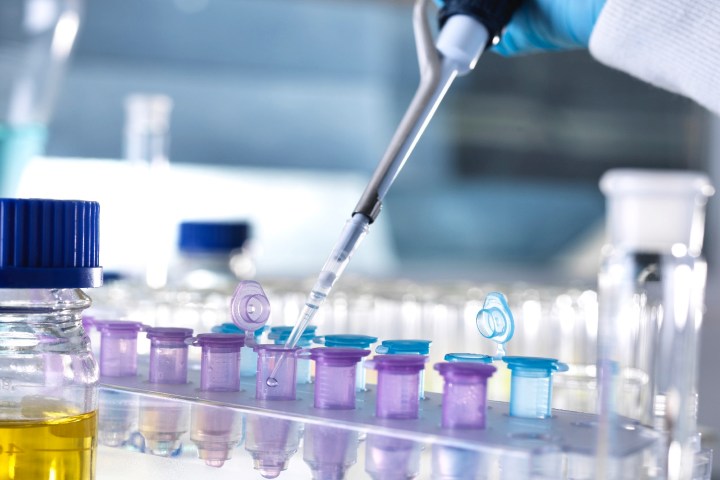For a lot of people, the term “Twitter bot” carries some negative connotations. But a fascinating research project coming out of the U.K.’s University of Glasgow is doing its bit to change that — by using algorithmic online communications not to tweet out controversial messages, but to carry out some cutting-edge chemistry.
Developed by chemistry professor Lee Cronin and his team, the #RealTimeChem project uses a pair of robots to perform chemical reactions in the lab, executing simple experiments involving mixing liquids and then recording the results. The Twitter part relates to the fact that the two robots aren’t physically in the same lab, but are in different ones, and are communicating with one another via Twitter.
Given simple chemical experiments (for example, finding a particular color liquid out of 117 possible combinations), the robots shared their findings with one another using the microblogging service. By performing experiments in this collaborative way, they were able to halve the time it took to answer specific questions because they were able to divide up the work between them.
Right now, this is a proof of concept in many ways, but Cronin told Digital Trends that it could be an exciting first step in a new means of doing chemistry. The idea of robots carrying out chemical experiments is not entirely new, but connecting them together like this is something we’ve not come across before. Furthermore, Cronin said that the concept is scalable beyond just two robots — so it would be possible to conceivably have hundreds of robots around the world working together and sharing their results.
“You could imagine that chemists could access the platform and send a message saying, ‘I’ve got a big problem I’m trying to solve. Can other people help me?’” Cronin said. He speculated that different laboratories could then help out by making different molecules and reporting back to one another.
“It allows you to delocalize, decentralize, and parallelize the making of molecules, to make it much faster,” he said. “It’s infinitely scalable. If you’ve got one robot doing 100 experiments in an hour, two robots could do 200 experiments, three could do 300 experiments, and so on. You’d have linear scaling, at least.”
It’s almost enough to make you love Twitter bots!



